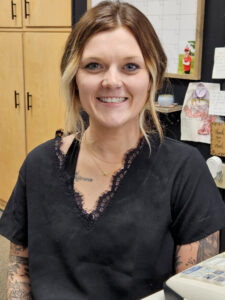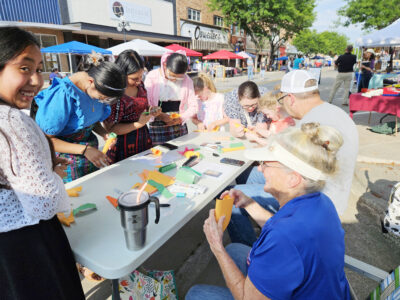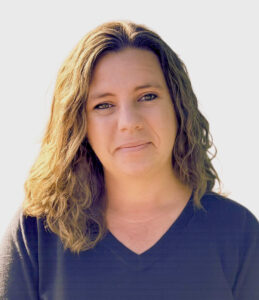From a distance
Teachers work to maintain contact with students, families while schools are closed due to the COVID-19 pandemic

Teachers Kurt and Michele Veldhuisen and children Joleah, Liana and Jamin.
Michele Veldhuizen’s classroom at Webster City High School sits silent now, void of the hustle and bustle of a normal April where every day brings teachers and students one step closer to the end of the school year.
The coronavirus has robbed teachers and students alike of a sense of normalcy. Prom has been swallowed up in the pandemic, as have daily lesson plans and end-of-year curriculums.
Essentially, it’s the land of the unknown, where ideas on how best to serve students change daily.
“We definitely enjoy the break we get over the summer, but this, by no means, is a typical break,” Veldhuizen, a 22-year veteran educator of English at WCHS, said. “But it’s the human side, the reason I’m a teacher is for that connection and those relationships with students, and not having those is hard.”
Libby Anderson, a 2002 WCHS graduate and fourth-grade teacher at Sunset Heights, feels Veldhuizen’s pain. She, too, misses that daily interaction with her students and yearns for the day when she can instruct from the front of the room once again.

Teacher Libby Anderson shares a story with her children Max and Hallie.
“We miss our kids, that’s the biggest thing,” Anderson said. “I made some phone calls (Monday) morning and talked to some parents, and some of the parents put kids on the phone to talk. Any way that we can keep that connection with our own students, that’s what we want to do.”
Educators and schools across the state have developed different methods to keep students engaged during this break from normal activities. In mid-March, Governor Kim Reynolds recommended that schools close until April 13 in an attempt to stop the spread of COVID-19. Last week, the closures were extended through April 30.
- Teachers Kurt and Michele Veldhuisen and children Joleah, Liana and Jamin.
- Teacher Libby Anderson shares a story with her children Max and Hallie.
Distance learning on a volunteer basis has become the norm through this first month of the closures. Schools have sent out packets of work for students to do and other various means to keep students active.
“Equity plays a big role in trying to make sure that all students have at least access to it,” Anderson said. “But our biggest thing is to make sure that the kids and the families are OK, and hopefully there is some maintenance of all the great things they’ve learned this year.”
Anderson has maintained contact with her students and their families through social media, and has even generated videos on different teaching methods for parents to aid their children at home.
The Webster City elementary teachers will continue to provide their students with voluntary work through the end of April.
At WCHS, students will be given required work that will be graded beginning on Monday, which brings virtual learning to the forefront. Veldhuizen admits the concept is stressful simply because both teachers and students will be learning as they go.
“The unknown, that’s definitely the worry,” Veldhuizen, who also oversees the schools yearbook class, said. “What is it going to look like? There are a lot of variables in place … we have to look at the reality, like some of our kids are at home with very young siblings, so we can’t expect them to sit in seven hours of class a day.
“The stress of (the coronavirus pandemic), that’s a worry too. This isn’t something that us adults really know how to cope with, so how are the kids?”
This extended break has allowed both Veldhuizen and Anderson to continue to educate their own children though. Veldhuizen has put in place a daily schedule for her youngest daughter, Liana, who is in kindergarten at St. Thomas.
“Our littlest is six and she’s a spitfire who needs that structure,” Veldhuizen said. “She has a 10 (a.m.) to 3 (p.m.) schedule and she likes it. It’s short little bites of stuff that she can work on, and we’ve heard from her teachers multiple times.”
Anderson was enjoying some downtime while watching the Wizard of Oz with her elementary-aged children, Max and Hallie, Monday morning. But the learning hasn’t stopped in her home either.
“We read a lot, we’re doing the packets that are sent out and we’ve written letters to friends,” she said. “This is crisis learning at its finest for all of us. We’re just all trying to maintain a little bit before we’re allowed to go back.”







